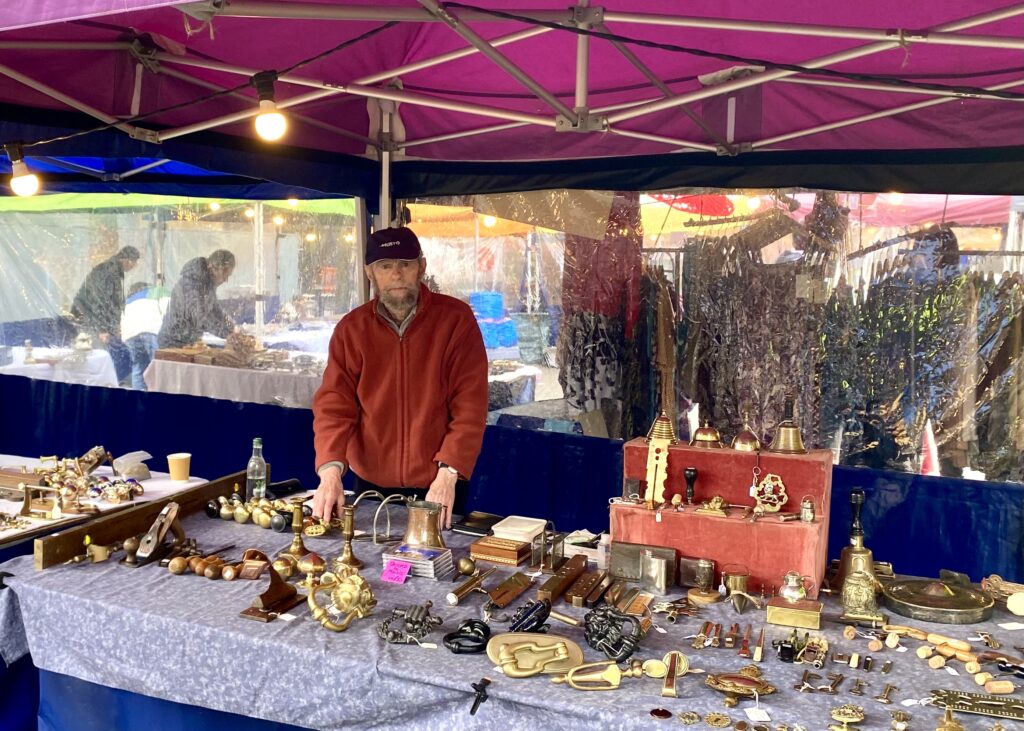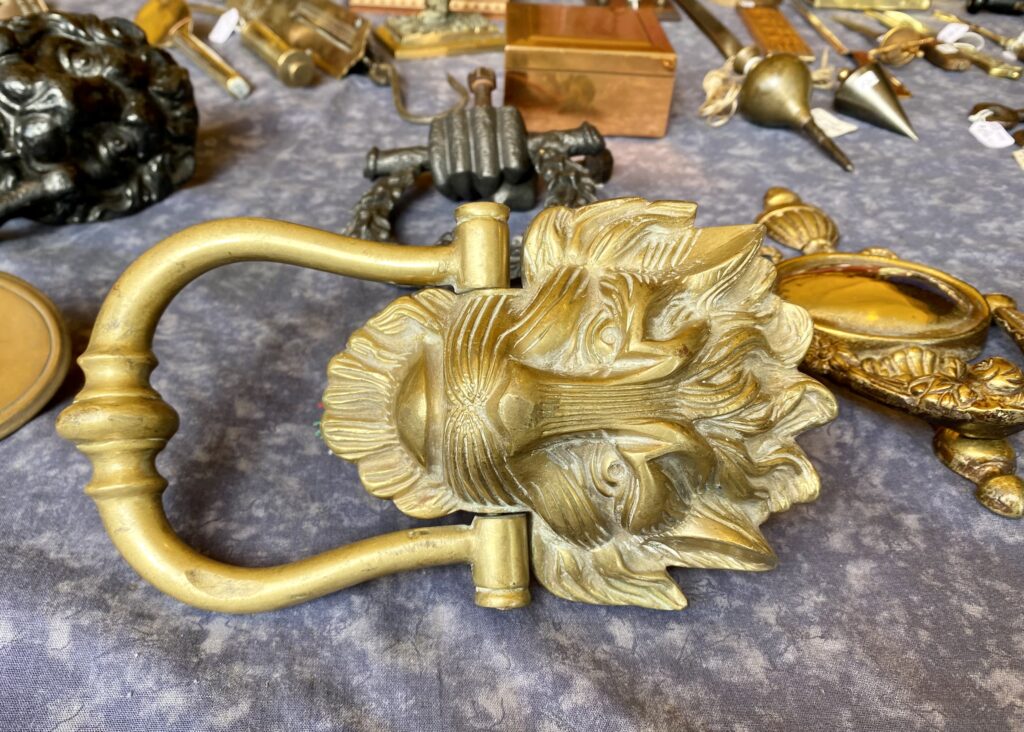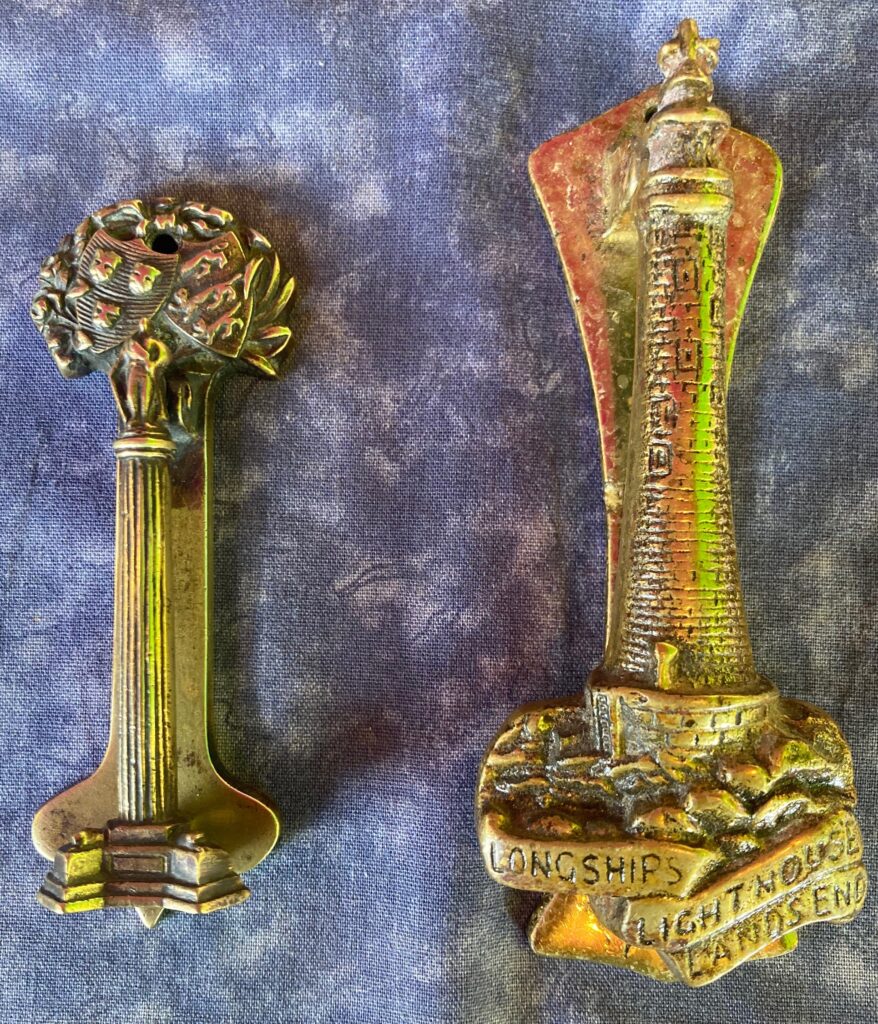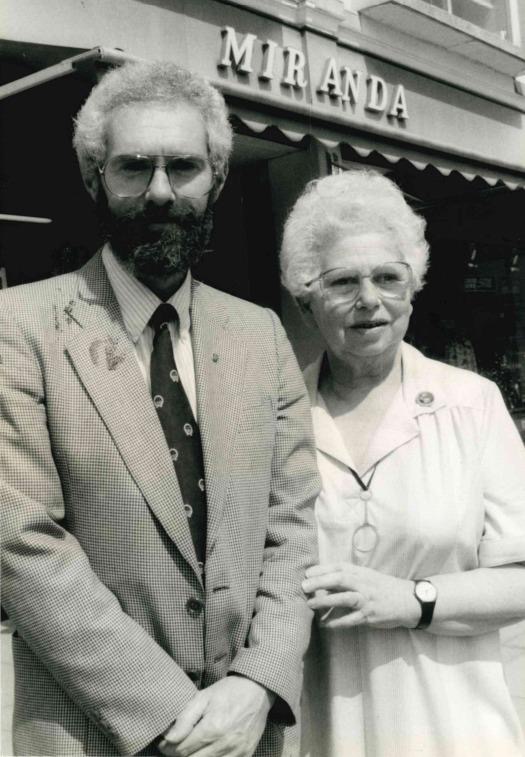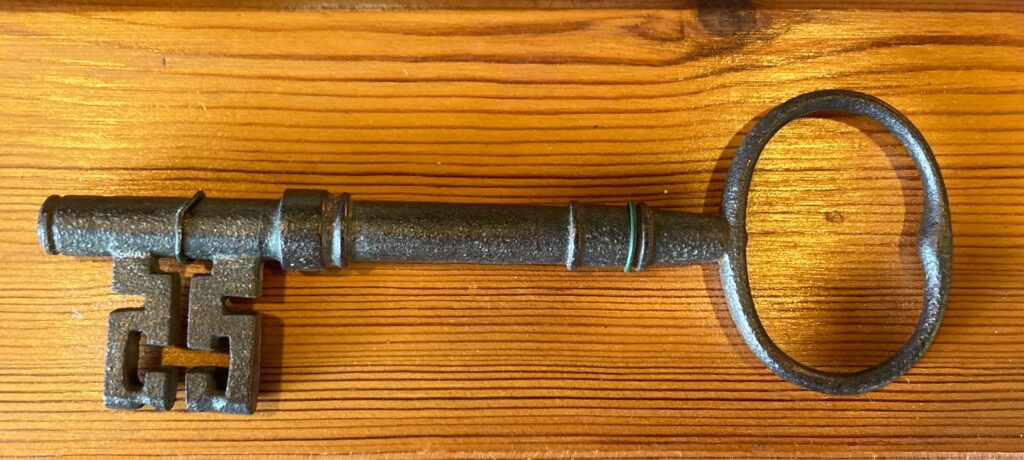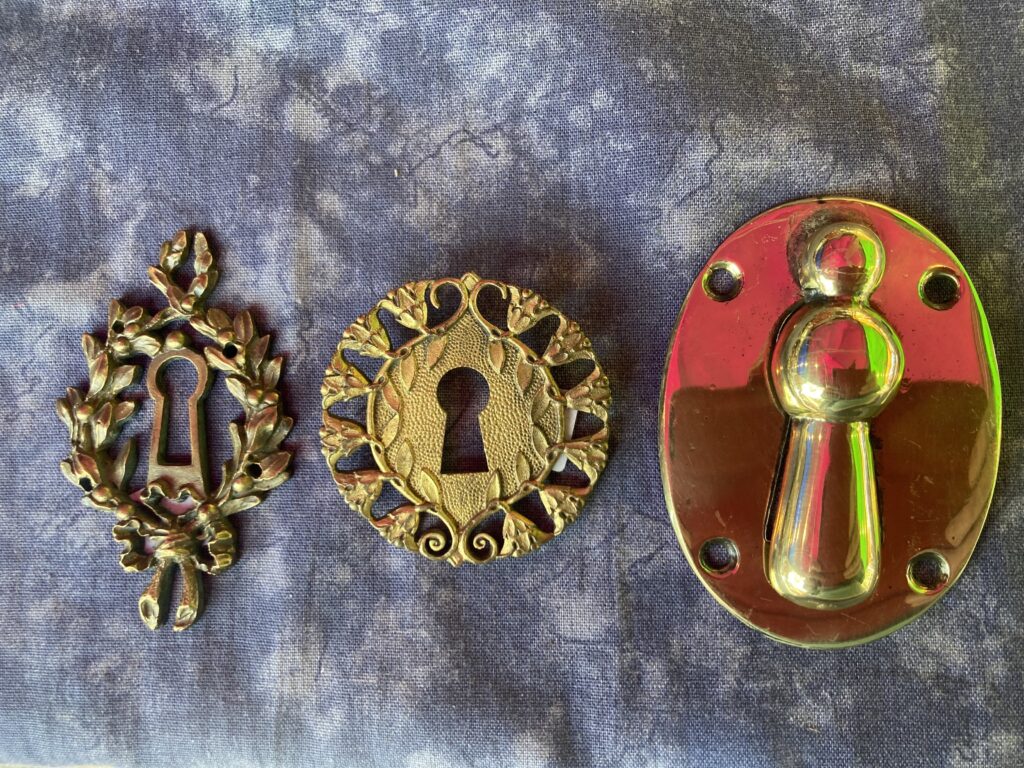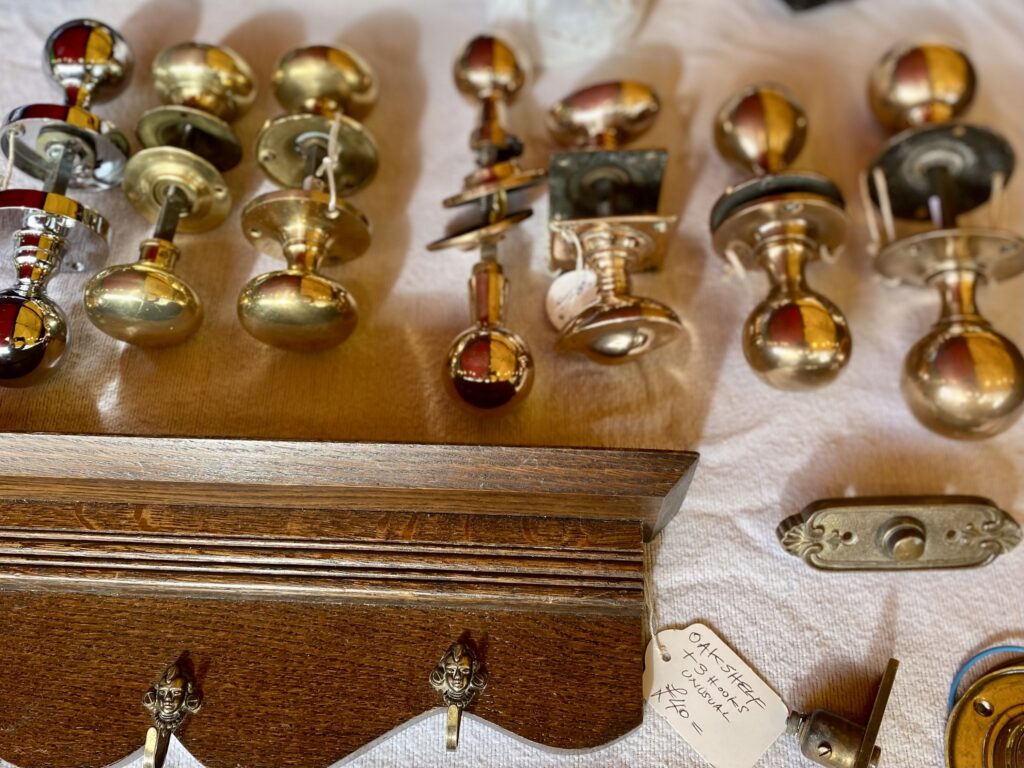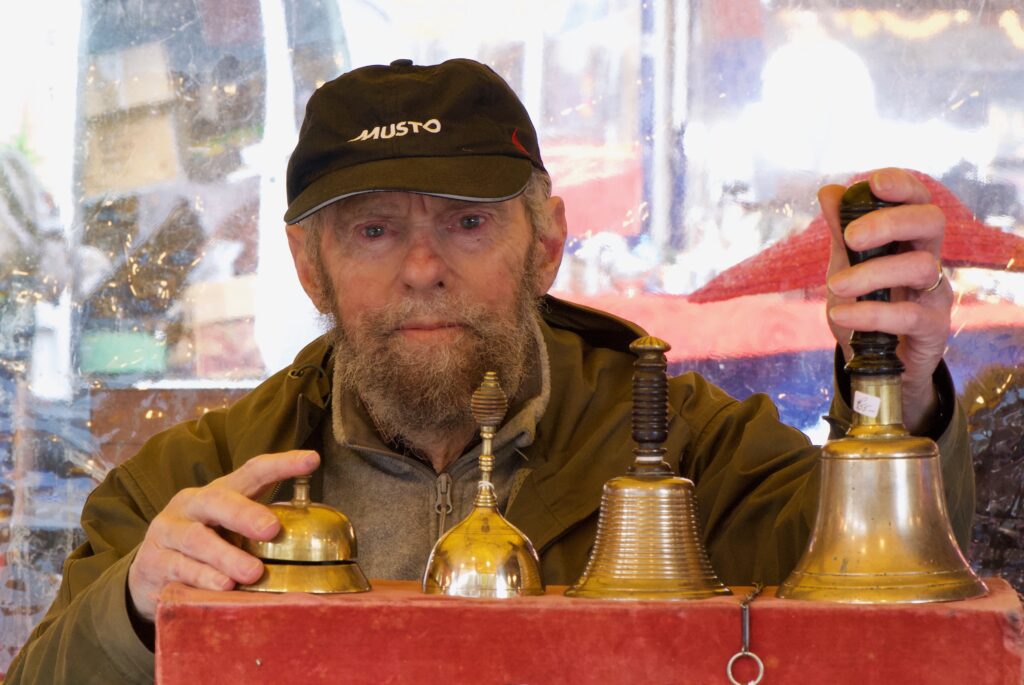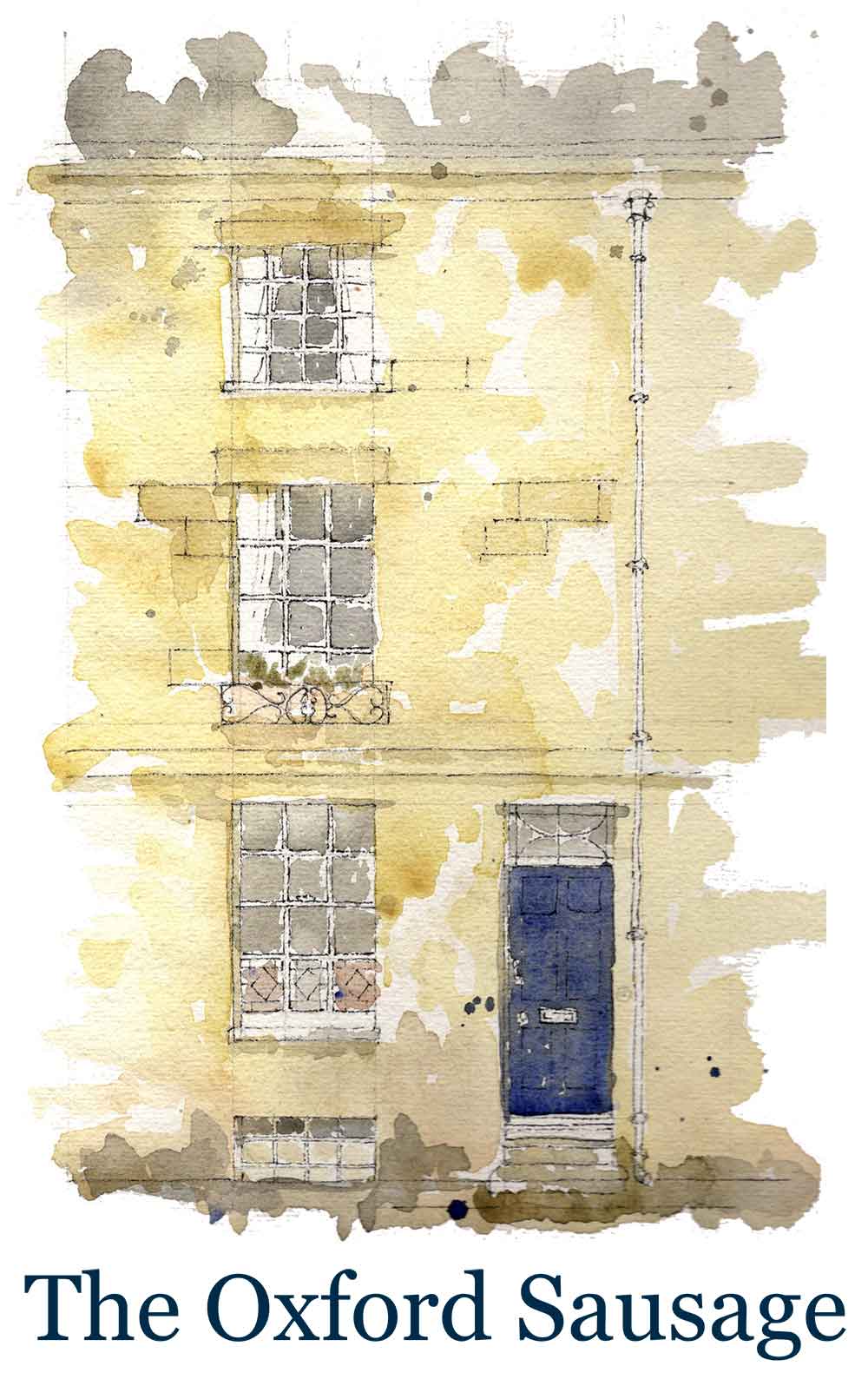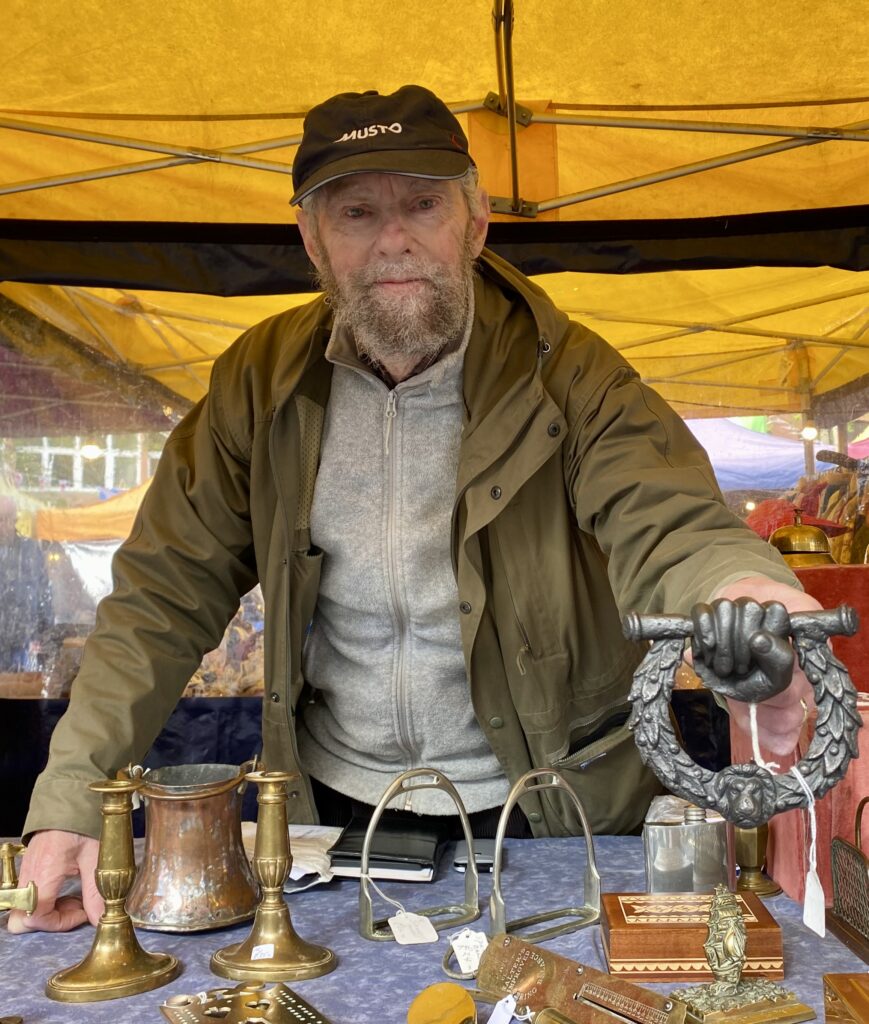Peter Forbes, has been setting up at Gloucester Green market since six thirty in the morning when I arrive at nine. You can’t miss him. “I’ve got the best pitch,” he grins from behind his peaked baseball hat. “I get to choose because I’ve been here the longest. When people come round the corner from George St, I’m the first stall they see – all these shiny things.”
Peter has been trading in brass and iron fixtures and fittings, every Thursday here for 33 years. Door knobs and door knockers, letterboxes and locks, door numbers, keys and key covers, bells, hooks and hinges, everything is neatly arranged on the table in front of him according to type and function. “Gloucester Green was redeveloped in 1990. Before that it was the old bus station,” he says.
A dismal place I remember well from the 70’s, where I’d hang around waiting to catch a bus back home from school.
“There were four stalls in the beginning,” he adds waving to the now bustling mix of bric a brac and food stalls. “I’m the last one left from those days. There’ve been many, many people since then who have disappeared. People think its easy doing the market but it isn’t. You have to have some skill and you have to be patient. You have to build a following, and people have to trust you.”
As if by magic an old, loyal customer arrives, also called Peter and asks for a heavy, brass door knocker to be put aside.
“I can never resist the shiny brass,” smiles customer Peter. “It cheers me up. I’ve got boxes full of it.” It’s not as if he needs it, he tells me, as his door is already adorned with one of Forbes finest knockers. “It looks like the grill of an expensive Lamborghini or something – however it’s the lyre of Orpheus. A beautiful thing and I don’t tell a liar,” he smiles before taking Peter’s weekly order for coffee and cake.
Punters are encouraged to, “please free to touch if you want to,” and that’s about as pushy as he gets, relying instead on a dignified, soft politeness and passion for the subject which is available for those who are interested.
“This is my favourite thing on the table today,” he enthuses, pointing to a heavy knocker emblazoned with an iron fist. “It symbolizes the Duke of Wellingtons victory at Waterloo. It’s the Iron Duke crushing Napoleon. These knockers were made to raise funds for all the wounded soldiers – there were thousands of them made. There was of course no NHS in those days. The French aren’t too keen on it though!”
Door knockers can apparently be traced back to Ancient Greece when there were slaves whose sole purpose was to open the door. Chained to their position they often fell asleep and so a metal ring attached to a plate was added with which to rap on the entrance and wake them up. It also doubled as a handle. The Georgians popularized the door knocker in this country, creating ever more elaborate designs. “The lion’s head was very fashionable – it was seen as a symbol of power,” says Peter showing me a particularly fine example on the table. “There’s one on the door to Number 10. The British liked this image when we had an Empire and were the most powerful nation in the world. Wolverhampton, Birmingham and the rest of the Black Country became famous for their foundries supplying the rest of the globe. Not any more of course.”
Hand shaped knockers are believed to have originated from The Hand of Fatima, a palm shaped talisman thought to protect against evil, fish shapes were made for shipping merchants, and the Grecian urn became popular in the Georgian era, “available still in cheap and nasty replica at B & Q”, bemoans Peter. The prudish Victorians even hung knockers on their bedroom and bathroom doors, daintier versions of their heavy front door cousins.
Born in Yorkshire in 1941, Peter never met his father who was killed in the war. “There was lots of bombing where we were and my mum’s friend rang her and said they weren’t bombing Oxford so why didn’t she move there,” he confides. “Apparently Hitler wanted it for his capital. Oxford was very dirty when we moved here – all the buildings were black. Everyone was burning coal. None of the colleges had been cleaned, that all came in the 60’s. It wasn’t an attractive place ”
When Peter left school he worked as a solicitors clerk for Darby and Son in New Inn Hall Street, around the corner from where we are sitting, now long gone. ‘It gave me an entrée into where to borrow money from. I loved it. All the building societies knew me from the lawyer’s office. Best thing I ever did. When I wanted a mortgage I got one even though I was earning peanuts. It’s not what you know, it’s who you know. Still true today.
“After that I went to work for my mum. She had a good trade in the retail clothing business by then. She had five shops all called Miranda, named after a friend’s horse, two in Headington, one in Summertown one in Cowley and one just over there in George Street. But then she got ill and the leases began to run out.”
That’s when Peter, then in his late 40’s, decided to make a hobby into a business
“My mum gave me a key for my 21st birthday. A large and heavy 19th century cast iron key. I was intrigued and smitten – locks and keys go back to the Ancient Egyptians. I’d been collecting ever since.”
There’s a line of heavy decorated metal keys in front of us, the kind that look like they open an entrance to a large country house or fancy casket. I agree there’s something magical about these beautiful castings, allowing entry to a forbidden place or a secret hoard of gold and silver.
The earliest locks and keys used very basic technology and only the very wealthy needed them. Besides they had plenty of servants to guard what they had. But things changed when an expanding middle class demanded more security for their homes. A Robert Barron invented a lever lock in 1778, and then in 1818 Chubb started mass production of a lock and key that couldn’t be picked. “Criminals kept breaking into the trains going to Calais taking bullion abroad,” explains Peter. “The Government was beside itself and it encouraged locksmiths to invent a safe that couldn’t be broken in to easily. Chubb’s invention was an overnight success. All over the empire they had Chubb locks and safes. All the Embassies had Chubb safes. They were very good quality. Sadly this extraordinary company has been asset stripped. I’m not even sure it exists any more,” he says gloomily. It was an American, Yale who invented the cylindrical lock and the flat key we still use today. Somehow I cannot see these making their way on to Peter’s table. They just don’t hold the same magical quality.
However back in 1990 Peter knew he couldn’t make a living from just locks and keys, so he decided to include all door furniture, “everyone’s got a door, it’s the entrance to everyone’s home” and now he’s added a few other odds and ends.
“Coat hooks are my best seller. And bolts go best in the winter – when the clocks go back, it starts getting dark and people want to shut their doors tightly. Bells sell well too.”
By mid morning a steady stream of customers are arriving attracted by the welcoming gleam of his shiny wares. Peter’s pleased that the tourists are coming back. Some Americans come three or four times a year and drop by just to check that he’s still there. He’s kitted out the doors to many a North Oxford house, stripped of its Victorian door furniture in the mid 20th century. He sells to Lady Henrietta Spencer Churchill at Blenheim Palace for her interior design business and he’s finding it hard to keep track of the celebrities he has helped out with a decorative doorknocker. Thankfully at 81 Peter shows no signs of packing it all in. “Please feel free to touch if you’d like to,” I hear him say as I leave. “Those are a pair of door plates. If you have a lovely mahogany door, you don’t want fingerprints, so you put these on.” So catch him while you can. There’s no one who knows more about how to dress a door than Peter Forbes.
Pictures by contributing photographer John Milnes
